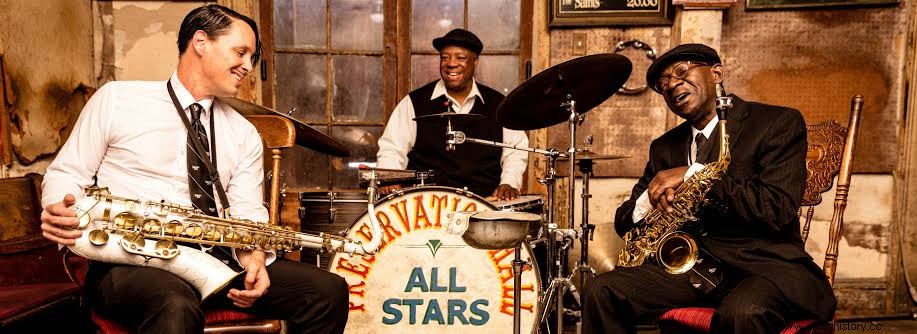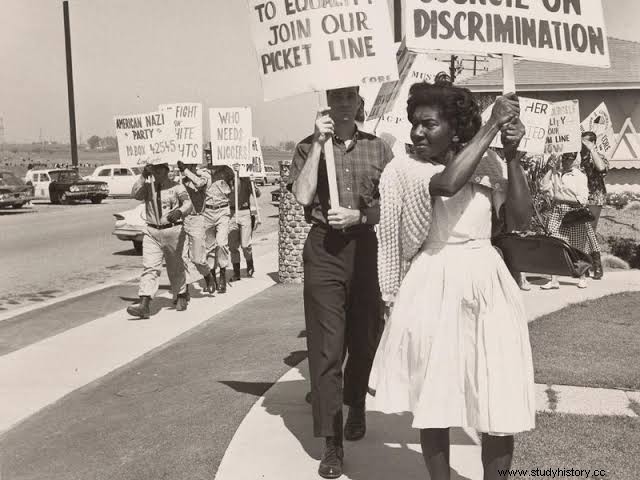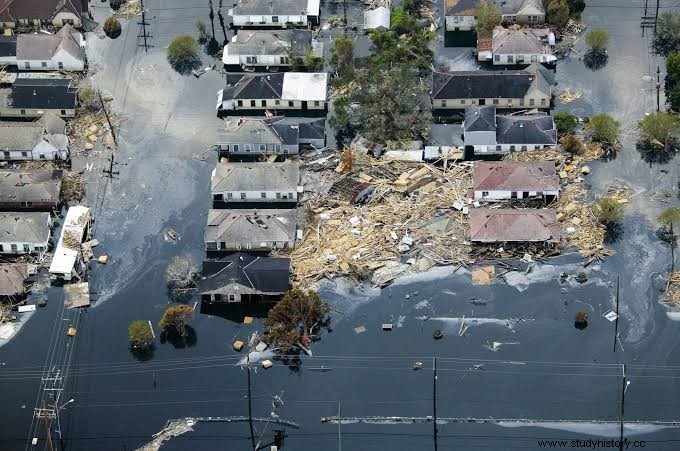Known as The Big Easy, known for being the birthplace of jazz music, with a rich history of endurance through disasters, at the forefront of the civil rights movement against racial segregation in the United States, as well as a cultural melting pot. If you're looking for an interesting place to see next time, New Orleans is the city to be.
In this blog I will let you jump into a journey into the history of New Orleans mixed with the cultural events that took place. The timeline will take you through a step-by-step guide to major events relevant to just over 300 years of the city's history.
Let's start with the history and culture of the city.
New Orleans History and Culture
1699:First Mardi Gras Celebration Ever in New Orleans-
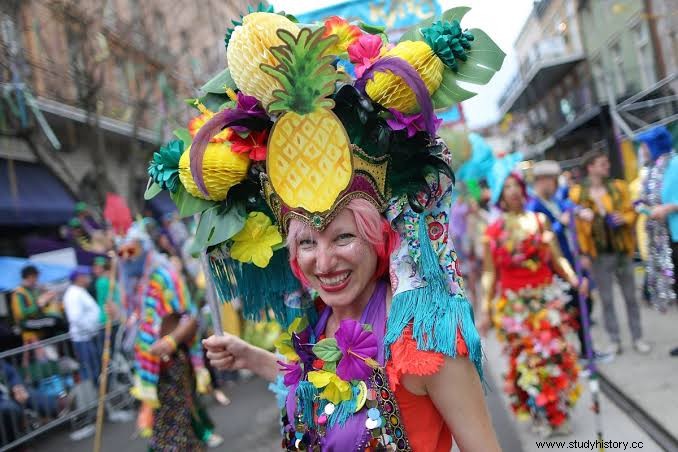
- © NEW Daily News
Back in 1699, explorers Bienville and Iberville landed near the slope of the Mississippi River. That day happened to coincide with Fat Tuesday. Since it is common among explorers to celebrate a successful journey, especially since the day coincided with Fat Tuesday, they did so as well. They called it Point du Mardi Gras and held a small celebration over it. Many other folk tales describe the event differently. The origins of the celebration are believed to be different in different stories, but this is one of the most famous.
It is believed that this became a tradition as the area became officially known as New Orleans. Later, Mardi Gras became a well-celebrated event.
1718:The Origins of New OrleansBefore it became a city, the area was a marshland with a lot of mosquitoes and animal habitats of relative niche. The province was filled with dense plant life that grew in marshy areas. It was a very tough environment for human settlement to be believed. And yet Jean Baptiste Le Moyne de Bienville observed the fact that the area lay along the Mississippi River. While it was a swampland at the time, he saw the strategic location it could be in the future. On behalf of the Duke of Orleans, he chose this place for the establishment of a new city. It became known as "Le Nouvelle Orléans".
1763:The Spanish RuleThe Treaty of Paris and the one between France and India were to find New Orleans in the hands of the Spanish government. The participants in this party were Great Britain, Spain and France. This site served as an outpost for the Spanish government, a kind of channel for trade with Cuba, Mexico and Haiti. Later, France ruled the colony again until it was eventually sold to the United States. The event is historically known as the Louisiana Purchase.
1788:Fire, Destruction, Reconstruction
-
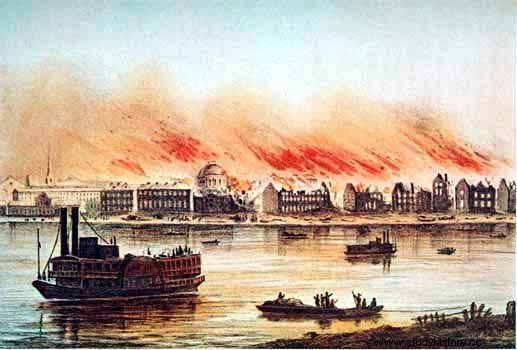
- Source:frenchcroles.com
If you study the history of New Orleans, you will find that the city has undergone quite a few events that set out to rebuild the arena mate over and over again. Towards the end of Spanish rule, the city was engulfed by huge fires that spread to around 850 of the burgeoning city. It happened on Good Friday that year. This was not the first time the city had to endure how to build itself, nor was it the last. 200 buildings were ravaged by fires just six years later. Because of this incident, much of the city had to be rebuilt.
1791-1804:Haitian Revolution
This was a major event that became a turning point for the future of New Orleans. The refugees from the high-end revolution arrived in the city and the free black population of refugees was initially kept out by order of the governor of New Orleans. However, influential French Creoles protested against it as the majority of the refugees were French-speaking and it increased their foothold in New Orleans, so they were eventually let in.
1803:The Historic Louisiana PurchaseAs far back as 1803, an agreement was reached between Thomas Jefferson (3rd President of the United States) and Napoleon Bonaparte (military leader of France). It later became known as the Louisiana Purchase. It was a historic event that changed the course of the potential future of New Orleans. Napoleon Bonaparte needed the funds to continue the ongoing war between Britain and France. In the history of the United States, it was one of the most important achievements of one of the nation's presidents.
1817- 1905:Yellow fever epidemic
If you think viral outbreaks and epidemics are a "2020 thing", you need to think again. An outbreak of yellow fever occurred in 1905, and spread from the lower French quarters. It was believed to have been transmitted through mosquitoes or passengers. Virulent mosquitoes may have come together with bananas sold from Central America after being unpacked from one of the cargo ships. The exact number of those infected and expired is not certain, but it is estimated that there are around 3,000 people for those affected and around 400 people for those who died.
Late 19th Century:The Era Of Jazz
There were many varieties of music present in America during the 19th century, but the emergence of a new form of music, which soon became the new norm, a unique blend of African spiritual songs, ragtime and blues, so beautifully blended to give birth. Jazz "". Jazz is considered to have its origins in New Orleans and Buddy Bolden is known as the father of jazz. His trumpet playing set him apart from all the other musicians. Today, jazz is considered a factual ingredient in the jazz music scene, which entertains and enriches listeners' experiences. This form of music is considered one of the most important contributions from New Orleans to the world.
1950:Civil Rights Movement Events in New Orleans
More than 40% of the population of New Orleans was black at the time. Even then, most of the white-owned shops, whether retail or other, had separate services and facilities to serve black people. Most of the stores did not even accept African Americans as employees. The Consumers League of Greater New Orleans was organized in 1959 by Pastor each investigator and physician Henri Michel to protest discrimination in employment, as well as segregation and services offered to people of color.
The civil rights movement led to a boycott of every store and service that had segregation facilities based on racial colors. Many arrests were made of the protesters. Eventually, it all led to a freedom march in 1963. Although things did not change overnight, it happened slowly. The frequent boycotts forced companies to reconsider their segregation policies. The facilities were slowly desegregated. While it took time to change the mentality, business was business, so it changed first.
1965:The devastating Hurricane Betsy
It is many times in the city's history that it has suffered through natural disasters. The city had to be renovated frequently, while most of the time was the cause of fires. But the city has also been through huge hurricanes. In 1965, a huge hurricane started in the city of New Orleans, which ravaged many properties and caused destruction throughout the city. It was later called Hurricane Betsy.
1967:Adoption of New Orleans Saints
In 1967, New Orleans adopted a football team called the New Orleans Saints. It was founded by David Dixon of the city and John W Mecom Jr. When the team was founded on November 1, 1967, overlapping with All Saints Day, taking into account the feelings of the large Catholic population, it was called the New Orleans Saints. To be completely honest, the team did not do well. Well, at least not in the beginning, or the middle. The kids came and went and the team endured being influenced by many people, but the city remained loyal, so that it still supported their existence, made them continue to try their best.
All the perseverance and effort from the team gave results in 2010. The team finally went through the ranks of the Super Bowl and finally to one in the Super Bowl in 2010.
Hurricane Katrina had just passed through destroying the city. The victory of the 2010 Super Bowl by the New Orleans Saints evoked a round of celebration throughout the city, raising morale and unity, amidst the gloomy atmosphere that Katrina had caused.
1970; First jazz party ever-
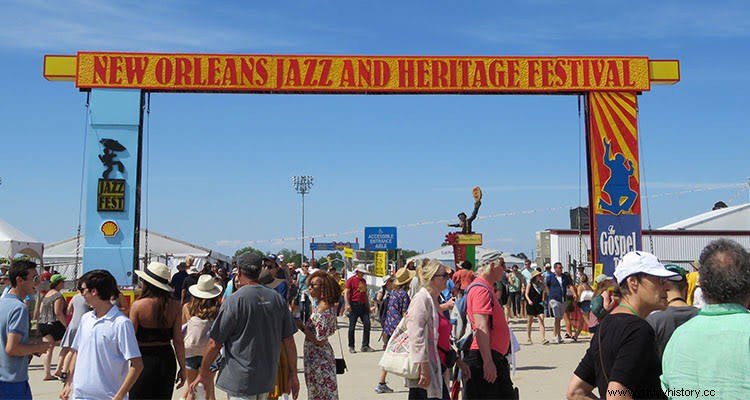
- Source:Creole Magazine
One of the biggest attractions in New Orleans is Jazzfest. If you're looking for things to do around New Orleans, then the 7-day jazz festival, which attracts international as well as local performances, is one of the best choices you can make.
While at the moment it may be a world famous festival, you might be surprised to know that it only started as a small celebration of a few.
The New Orleans Jazz &Heritage Festival was an idea born of the New Orleans Motel Association with George Wein (who had experience producing a Newport Jazz Festival as well as Newport folk festivals in the past).
George Wein produced the first festival with a team of artistic advisers that included Quint Davis, who was an intern at the time. Quint Davis later became the CEO and CEO of the entire company.
The Jazz Festival is a cultural melting pot in New Orleans. If you are planning to visit the city, it would be a good idea to do it around the national festival.
2005:The Catastrophic Hurricane Katrina
The survivors and residents of the city describe it as a doomsday-like event. On August 29, 2005, the deadliest hurricane hit the United States, causing chaos and causing around 1,500 deaths, in addition to leaving 2,000,000 homeless.
It damaged the living system, the city was flooded and became the leading cause of death in Louisiana as well as the Mississippi. More than a decade and a half later, the city finally regains its former population, which was displaced due to Katrina. However, there are still many former homes that can be found in disrepair caused by it at the time.
Top 7 places to see in New Orleans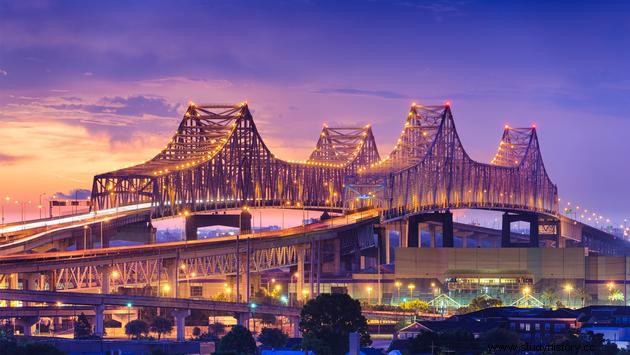
1. National Museum of World War II
- A fantastic museum that introduces you to the occurrences of the Pacific Theater and the European Front. A gallery of artifacts related to World War II.
2. Voodo Museum
- See the strange and exciting objects associated with voodoo practice, get to know Voodo Warlocks, enjoy the exceptional mysterious charm.
3. Music Box Village
- An interactive musical house with musical performances and innovative art.
4. St. Roch Market
- An open-air market originating from Hurricane Katrina damaged this area. It has an award-winning bar as well as a dining hall with 11 different varieties of restaurants.
5. Longue Vue House and Gardens
- Garden seminars and art and cultural events. Including 22 fountains, five artistic structures and nine gardens.
6. Studio Be
- "BMike" Odoms converted a warehouse that was abandoned into an exceptional place filled with amazing graffiti, and showcased his style by naming the show, Ephemeral Eternal.
This graffiti-centric exhibition went on to become the longest-running as well as the largest one-man art exhibition ever held in the United States
7. Audubon Butterfly Garden &Insectarium
- Are your children the type who are curious about butterflies and other insects? Then this may be the place to go, and don't forget to take your kids with you.
- The place has a koi pond, a butterfly sanctuary and a very helpful staff who are good with children.
7 Fun Things to Do in New Orleans:Guided Tours
-
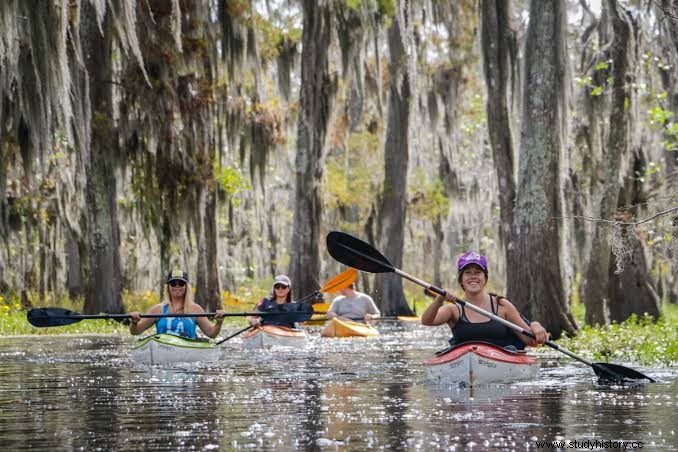
- Source:Visit New Orleans
• Go on a Day Jazz Cruise on Steamboat Natchez, take your loved one with you, make it a romantic getaway!
Take a short tour of the French Quarter along a 1-hour car ride.
• Get excited and terrified while mingling with the ghosts, vampires and Voodo art on tour.
Enjoy the sights of a luxury bus ride in New Orleans.
• Take a day trip on the Whitney Plantation Tour.
Take a behind-the-scenes tour of the Mardi Gras world.
• Go on one of the popular New Orleans Swamp trips by airboat or tour boat.
I advise you to plan your trip carefully before going to the city. Do some research on safe areas to visit at times for incidents that may be detrimental to your health during the visit. Efforts at all possible to try to visit the city during the Mardi Gras festival, but it will be the event that will accompany you throughout your life. There are many more things to do, places to stay in New Orleans, but the above are some of the few hidden gems I could think of. The major attractions can be found anywhere and everywhere on various blogs, so I focused the lists more on more fun places to be and things to do.
From ghosts and vampire rides to tasty pastries, here are five things you must do in New Orleans' French Quarter by The Peculiar Adventurer- Read more.

